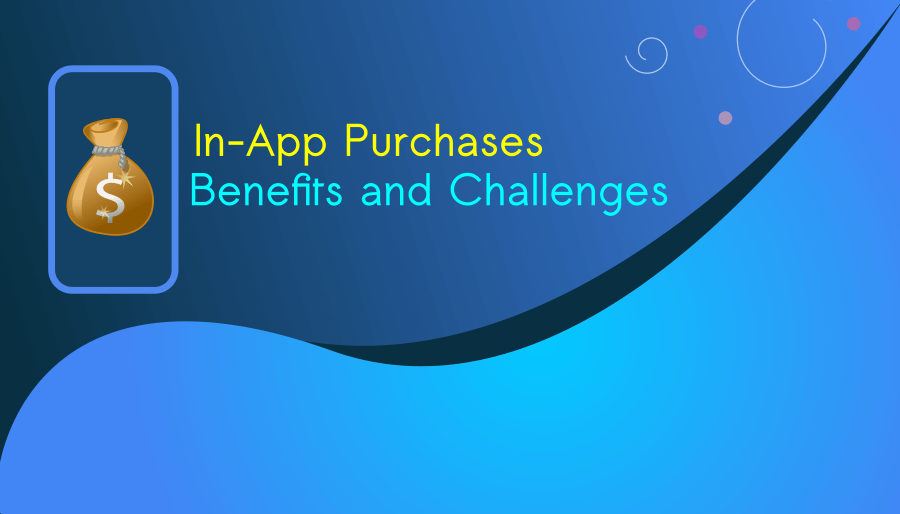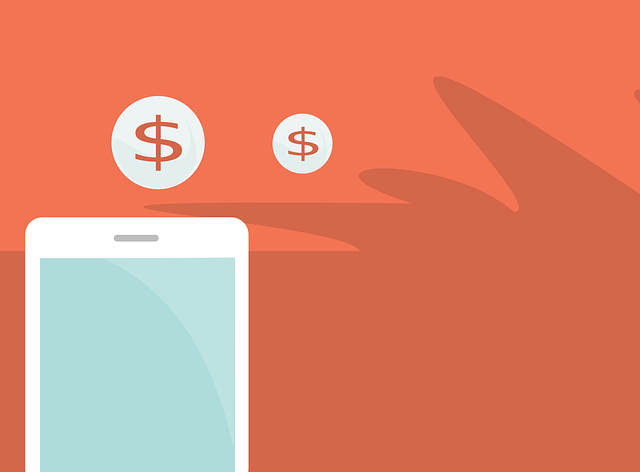In-App Purchases : Benefits and Challenges
In today’s mobile app-driven world, in-app purchases have become a ubiquitous part of the user experience. From mobile games to productivity tools, many apps offer various items, features, or content that users can buy directly within the app itself. In this comprehensive guide, we will explore what in-app purchases are, how they work, and their significance in the world of mobile applications.

In-App purchases meaning?
At its core, an in-app purchase (IAP) refers to any transaction where a user buys digital goods or services within a mobile app. These purchases can include a wide range of items, such as virtual currency, power-ups, additional levels, ad removal, premium features, or subscriptions. The primary goal of in-app purchases is to generate revenue for app developers while providing users with a more customized and enhanced app experience.

How Do In-App Purchases Work?
In app purchases typically work through digital storefronts provided by app platforms like Apple’s App Store (for iOS devices), Google Play Store (for Android devices), or other third-party app stores. Here’s a step-by-step breakdown of how the process usually works:
Integration
App developers integrate in-app purchase functionality into their apps using APIs and SDKs provided by the app platform (e.g., StoreKit for iOS, In-App Billing for Android).
Product Setup & User Interaction
Developers define the digital items or services available for purchase and configure their prices within the app’s developer dashboard on the app platform.
Users explore the app and encounter opportunities to make in-app purchases. These opportunities can appear as buttons, pop-ups, or prompts within the app.
Payment Authorization & Platform Validation
When a user decides to make a purchase, the app requests payment authorization from the user through the platform’s built-in payment system.
Transaction Processing
If the purchase is approved, the app platform processes the transaction and transfers the funds to the app developer’s account, taking a percentage as a commission.
Delivery of Digital Goods
Once the payment is confirmed, the app delivers the purchased digital goods or activates the premium features or services within the app.
Confirmation and Receipt
Users receive a confirmation of the purchase and a receipt, usually via email, to keep a record of their transaction.
Why Are IAPs Important?
In-app purchases have gained immense significance in the mobile app industry for several compelling reasons:
Revenue Generation: IAPs are a major revenue stream for app developers. They allow apps to generate income beyond initial app downloads, often resulting in a steady stream of revenue over time.
User Engagement: IAPs can enhance user engagement by providing users with a more customized and enjoyable app experience. Users who invest in digital goods or premium features are more likely to continue using the app.
App Monetization: For developers, IAPs offer a flexible and effective way to monetize their apps, particularly for apps that are initially offered for free.
Competitive Advantage: Apps that offer IAPs can gain a competitive edge by providing additional value to users and potentially outperforming apps that rely solely on advertising or upfront charges.
Benefits and Challenges of In-App Purchases
In-app purchases offer a range of benefits to both app developers and users, but they also come with some challenges. Let’s examine both sides of the coin:
Benefits
Increased Revenue: In-app purchases can significantly boost an app’s revenue potential, especially if users find value in the offered items or features.
Enhanced User Engagement: Users who invest in in-app purchases are often more engaged with the app, leading to longer retention and higher user satisfaction.
Flexibility: Developers have the flexibility to offer various purchase options, allowing them to tailor their monetization strategy to their audience.
Challenges
Monetization Balance: Striking the right balance between monetization and user experience is crucial. Overly aggressive monetization strategies can lead to user frustration and churn.
User Privacy and Security: Handling user payment information requires stringent security measures and compliance with privacy regulations.
Monetization Strategy Complexity: Designing an effective in-app purchase strategy can be complex and may require ongoing adjustments based on user behavior and market trends.
Best Practices for Implementing In-App Purchases
To maximize the effectiveness of IAPs in your mobile app, consider these best practices:
Provide Value: Ensure that your IAPs offer real value to users and enhance their experience.
Transparent Pricing: Clearly communicate the prices of IAPs and any associated recurring charges.
Testing and Optimization: Continuously test and optimize your in-app purchase strategy based on user feedback and data analytics.
Offer Free Trials: If applicable, provide free trials for subscription-based services to encourage user adoption.
Promote Wisely: Avoid intrusive or excessive advertising of in-app purchases, as it can negatively impact user experience.
Customer Support: Offer responsive customer support to address user inquiries or issues related to in-app purchases promptly.
Verdict

In-app purchases have become a cornerstone of the mobile app industry, offering both developers and users a win-win scenario. Developers can generate revenue while providing enhanced app experiences, and users can tailor their app usage to their preferences and needs.
By understanding the types, benefits, challenges, and best practices associated with in-app purchases, you can effectively leverage this monetization strategy to create a successful and user-friendly mobile app.



